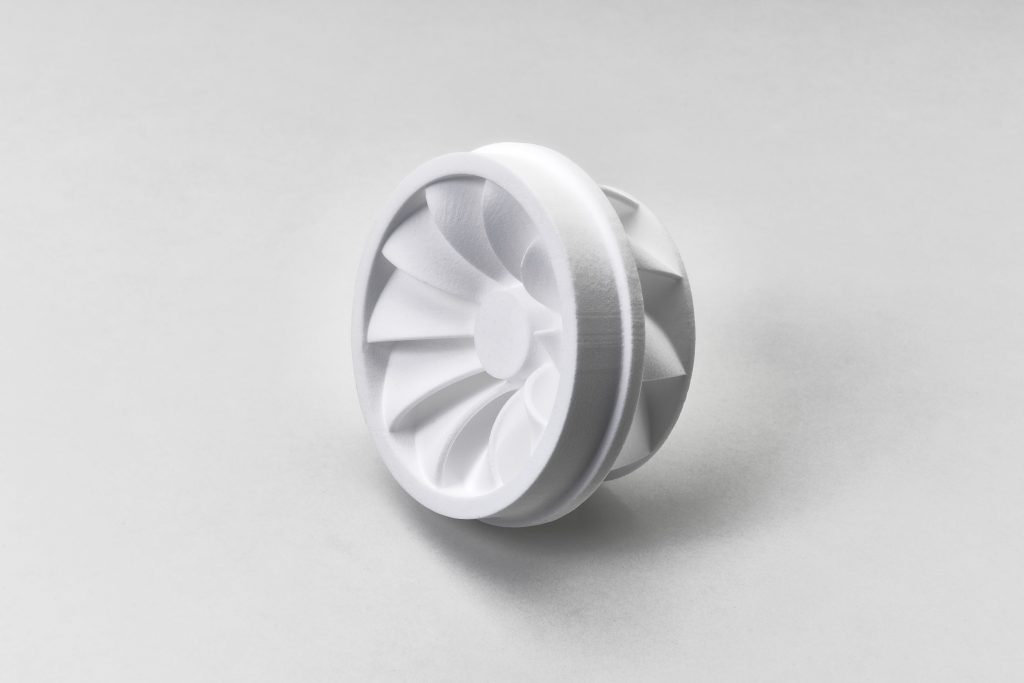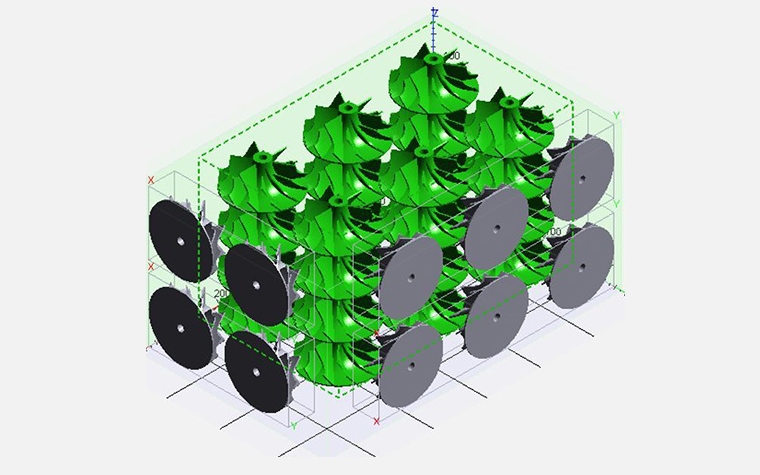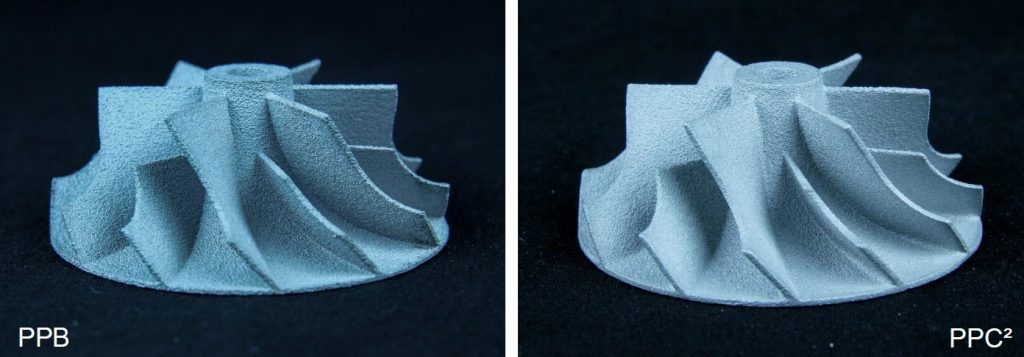Industrial 3D printer manufacturer voxeljet (FRA:VX8A), headquartered in Germany, has announced the release of a new plastic 3D printing process for its VX200 system.
The technology, named PolyPor C2 (PPC²), is an improvement on the company’s existing PolyPor B (PPB) process, primarily used to make investment castings for metal components. The main benefits of the printhead of the VX200 system that is used in the PPC² are described as providing “increased lifetime” of parts “at a high and consistent printing quality level.”
While the main benefits of PPC² parts are high detail accuracy/increased resolution and sharper edges.

Ground level introduction
By using voxeljet binder jetting technology, parts 3D printed using PPC² require no additional support structure and can be efficiently packed in manifold within the build chamber.
Dr. Ingo Ederer, Chief Executive Officer of voxeljet, explains “Our new PPC² process will be initially offered on our VX200 system. It is an affordable entry into 3D printing for investment casting foundries with an efficient part production for commercial castings such as turbine impellers and turbine blades.”

Refined surface finish
Starting in voxeljet’s compact VX200 system, PPC² will be working in a build volume of 274 x 174 x 127 mm (L x W x H). voxeljet also recently released a High Speed Sintering (HSS) process, which has a build volume of 300 x 200 x 150 mm.
PPC² uses Poly(methyl methacrylate) (PMMA) material which is economically better than polycarbonate (PC) in terms of tensile and flexural strength, transparency, polishability, and UV tolerance.
There is a noticeable improvement in the surface quality of samples made using PPB and PPC². This is due to a finer PMMA particulate quality (37 μm/0,037 mm) in the PPC² system and a new minimum layer thickness of 100 μm.

Tobias Gruen (Product Manager, voxeljet) adds that “by using our new and improved binder, we expect our industrial print heads to have an increased lifetime at a high and consistent printing quality level. Moreover, the unbound PMMA powder can be reused and recycled for forthcoming printing jobs, which ensures efficient material usage.”
The PPC² process will be officially presented at the ICI 2017 in Covington, KY from 15th to the 18th October. Check out our page for more 3D printing events near you.
Never miss another technology release by signing up to the 3D Printing Industry newsletter, following us on Twitter and liking us on Facebook.
Featured image shows a comparison of an impeller component casted using molds made by voxeljet’s existing PolyPor B (PPB) process and the new PolyPor C2 process. Image via voxeljet AG


